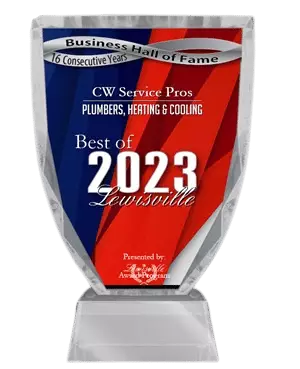When you live in a hot climate, you rely on air conditioning to keep you cool at home. You and your family notice pretty quickly if there’s something wrong with the AC! If your home AC system isn’t keeping you as cool as it normally does, it may be that it’s just hotter outside than usual. But sometimes there’s more to it than that. If your air conditioner isn’t cooling the house down the way it should, there are several possible reasons.
Troubleshooting Your Air Conditioning System
When your home AC isn’t working well, there are some quick and simple things you can check up on to see where the problem might be. These troubleshooting tips can help you pinpoint the source of the issue and fix whatever’s wrong.
1. Incorrect Thermostat Setting
If your home doesn’t feel as cool as it should, always check the thermostat first. It’s the easiest thing to check off the list. And if it turns out the problem is an incorrect thermostat setting, it’s also the easiest to fix. Check that your HVAC is in cooling mode, that the thermostat is set to a comfortable temperature, and that the timer isn’t preventing the system from switching on at the times you intend it to.
2. Blocked Registers (a.k.a. Air Vents) and Air Intakes
Is your air conditioner not cooling one specific room, or maybe a couple of rooms? The problem could be that the registers or air intakes that serve those rooms are blocked.
Registers are the air conditioning vents that distribute cool air within each room in the system. If one or more of the registers in a room are blocked (or closed), then that room won’t cool down. Once you clear away anything blocking the vent, the room temperature should start to come down.
The same holds true for the air intake, which is the place where the system pulls air from within the home and into the air conditioning unit to chill the air before sending it back into the home. Oftentimes, homeowners block these grills with furniture or fail to keep them clean and free of debris, which inhibits air flow through the system.
3. Dirty Filter
Another common issue that can prevent your air conditioner from cooling your home is a dirty air filter. Filters are often out-of-sight-out-of-mind parts of the HVAC system. Maybe your filter is in a difficult location, like the attic; in a packed hall closet (often the case in the Fox & Jacobs homes in the area); or behind a piece of heavy furniture. The air filter in your HVAC system promotes indoor air quality as it traps dust and other particulate matter. Eventually, the filter gets too dirty to let air flow freely throughout the system.
This is why an essential part of HVAC home maintenance is to clean or replace filters on a regular basis. Aim to clean or replace filters at least as often as quarterly, though it may be done more often to reduce allergens in your home. If you have pets or live in an area with high dust or pollen levels, the filter may need attention as often as monthly during high-use seasons. CW Service Pros can set you up to receive filters for your system on a regular schedule. You’ll know that when you receive your customized order, it’s time to replace your filters.
4. Outdoor Condenser Obstruction
In a central air conditioning system, the condenser is the big unit that sits outside the house. Inside the condenser is a part called a coil, and it’s the function of the coil to release all the heat that the system has drawn from the air inside your home. If the coil is unable to do this for some reason, the system is unable to release that heat—so your home doesn’t cool down.
The most common reason this happens is that the condenser has become obstructed in some way. For instance:
- Overgrown shrubs or trees
- Ants or other pests that have decided to take up residence in the unit
- An accumulation of dirt and other garden debris
Clear away all the debris, and the condenser should function again.
5. Frozen Evaporator Coil
Your indoor AC unit has a component called an evaporator coil, which contains a refrigerant. As air passes over the evaporator coil, the refrigerant absorbs heat, which cools the air down. The cooled air is then distributed through the home.
Some air conditioning malfunctions can prevent the refrigerant from absorbing heat. If this happens, the evaporator coil can get cold enough to freeze, even in the hottest weather.
This is an easy problem to spot, because if the evaporator coil is frozen, you’ll see condensation—and even ice—on the outside of the line. Some possible causes include:
- Dirty coil: If the coil is very dirty, its ability to absorb heat may be affected.
- Dirty air filter: The evaporator coil needs consistent airflow to work well, but if a dirty filter prevents normal air flow, the coil can freeze.
- Blocked registers: Similarly, lots of blocked vents reduces the overall airflow in the system. That, in turn, prevents the coil from working correctly.
- Refrigerant leak: Refrigerant moves between the indoor and outdoor units in a closed-loop system. But if there’s a leak in that system somewhere, and there isn’t enough refrigerant for the coil to operate properly, it will eventually freeze.
Some of these problems are an easy fix. Turn off the AC so that the coil can unfreeze, and in the meantime, fix whatever the issue is: clean the coil, replace the air filter, or unblock the vents. Once the coil is unfrozen you can turn the AC back on, and hopefully the problem is resolved.
If it’s not fixed—or if you can’t tell what caused the freezing—call your HVAC technician, as you’ll need the help of a professional inspection and possibly a leak location on the refrigeration system.
6. Leaky Air Ducts
Central air conditioning systems use ducts to transport cooled air around the home. The efficiency and overall effectiveness of the system relies on ducts that are well-insulated and airtight. Leaks in the duct network can decrease energy efficiency and have a significant effect on your energy bills.
Leaky or poorly-insulated ducts are a very common problem. In the average home, as much as 30% of the treated air moving through the system can be lost due to duct problems. That’s a huge waste of energy, not to mention the enormous effect it has on your utility bills!
Regardless of how well your air conditioner is functioning, it’s worth checking over your duct system to look for obvious issues, such as leaks and poor insulation.
Regular Maintenance Helps Keep You Cool
If these kinds of issues happen often, it’s worth considering what sort of HVAC maintenance program you have. HVAC systems are complicated, with lots of moving parts and mechanical and electrical components. That means they need regular maintenance in order to work properly. CW Service Pros provides inspections bi-annually to look for signs your systems may need work done or just regular cleaning and maintenance items.
Regular maintenance includes:
- Replacing or cleaning filters
- Checking registers to verify nothing is blocking the air flow
- Cleaning and clearing debris from around the outdoor condenser
Other tasks to keep the system flowing, such as testing wiring and connections, checking refrigerant levels, and replacing worn parts, are not things homeowners are prepare to do. They’re best done by a professional. For these reasons, and more, it’s best to get into a twice-a-year maintenance program (usually in the Spring and Fall). If you’re experiencing frequent maintenance problems, it’s crucial.
The good news is, even though you’re paying for professional maintenance, the extra effort pays for itself In the end, maintenance helps keep your air conditioning (and heating) at peak energy efficiency, reduces the need for unexpected and inconvenient AC repairs, and provides energy savings along the way. Joining the Gold HVAC Membership with CW Service Pros gives you priority services when an emergency happens and offers discounts on regular maintenance and repair services.
When the Problem Is with the System Design
Some air conditioning problems aren’t due to maintenance or repair issues but have to do with the way the system was originally designed and installed. Unfortunately, this can sometimes mean there’s no quick and easy fix. Discussion with a CW Service Professional will help you decide if it may be time to replace older inefficient and outdated equipment with a more energy-efficient and better-suited unit.
Incorrectly Sized Air Conditioning System for the House
AC systems come in a range of different sizes, related to their capacity to cool a given amount of space. This is usually expressed in tonnage. When installing a new system, HVAC technicians measure the cubic space in every room to work out how much AC capacity the house needs. Getting it right is crucial, because it affects how efficient and effective the system will be.
Too little: If the AC doesn’t have enough cooling capacity, it will never be capable of adequately cooling your home, no matter what you do. The system will have to work overtime to keep temperatures down and will struggle as outdoor temperatures soar in the Texas summertime.
Too much: If the AC has more capacity than is needed, it may cause uneven cooling. In this case some rooms can feel hot, stuffy, and humid even if the rest of the house is comfortable.
Does Your System Need to Be Zoned?
In large homes, or homes that have two or more levels, HVAC systems work best when zoned. This is a design principle that splits the house into multiple different zones and assigns each zone its own thermostat or thermostat settings. This lets you set the temperature in different zones individually to improve overall comfort and give you more control over how much energy you use. Weighing out the amount of air flow in zones is critical to make each area heat and cool correctly.
Poor Ventilation Can Lead to Overheating
If your home has an attic, poor ventilation in that part of the house may contribute to poor cooling. Remember that hot air rises, meaning hot air and heat will accumulate in the attic. And if there’s no ventilation or poor ventilation in the attic, all that heat is trapped, and continues to affect the rest of the house.
There’s no need to cool the attic down if you’re not using it as living space. All that’s needed is to provide adequate ventilation so that the heat can escape. Lowering temperatures for your house might be as simple as:
- Opening an attic window
- Clearing out a stopped-up soffit vent
- Installing a rooftop ventilation fan
- Installing an attic tent over a pull-down attic staircase to prevent the cooled air from going into the hot attic in the first place. Your CW Service Pros HVAC technician can take care of this for you during his visit.
How Old Is Your AC System?
Central air conditioning systems have a lifespan of around 10 years operating at peak efficiency. After this point, even a well-maintained system loses efficiency and won’t be able to keep the temperature as comfortable as when it was new. As it gets older, the need for repairs increases, too. It’s important to consider whether to pour money into repairing an aging system or replace it with a new, more energy-efficient model.
You don’t have to replace your AC system as soon as it hits the 10-year-mark, but it’s a good time to start planning for it. However, if you haven’t been able to plan for a replacement but decide it is in your best interest to move forward, CW Service Pros offers financing with approved credit and several other revolving credit options. Put your hard-earned money to work for you and stay comfortable in your home and with your decision.
Take Care of Your AC, and It Will Take Care of You
Air conditioning can feel like a real lifesaver in the scorching North Texas heat—so don’t forget to keep up with regular maintenance and professional servicing! Take good care of your home AC, and it’ll be in great shape to keep you cool when it counts the most!

















